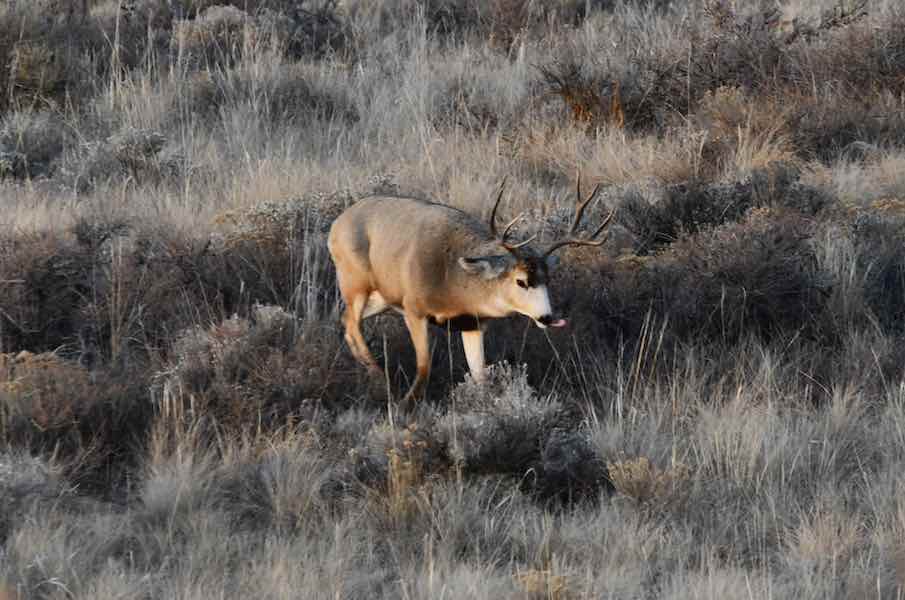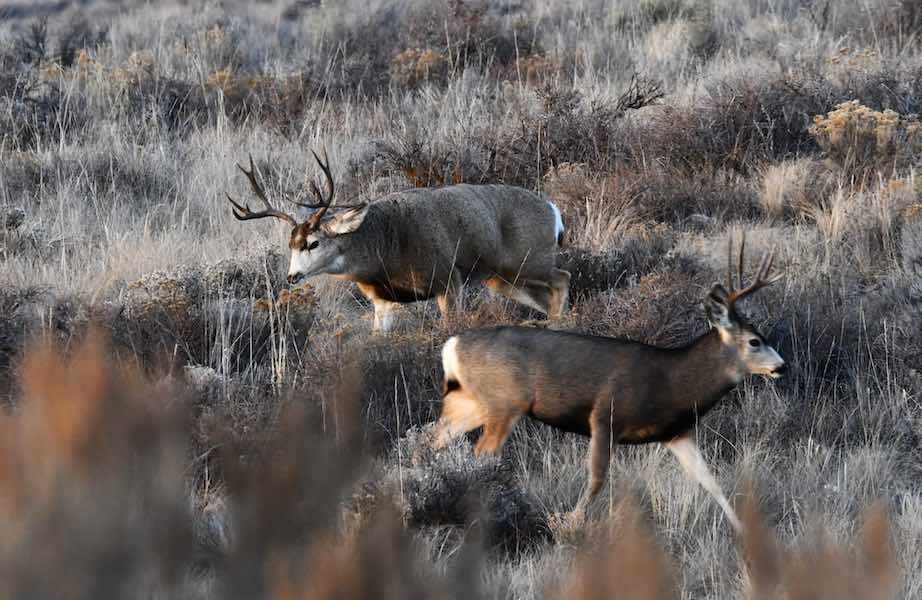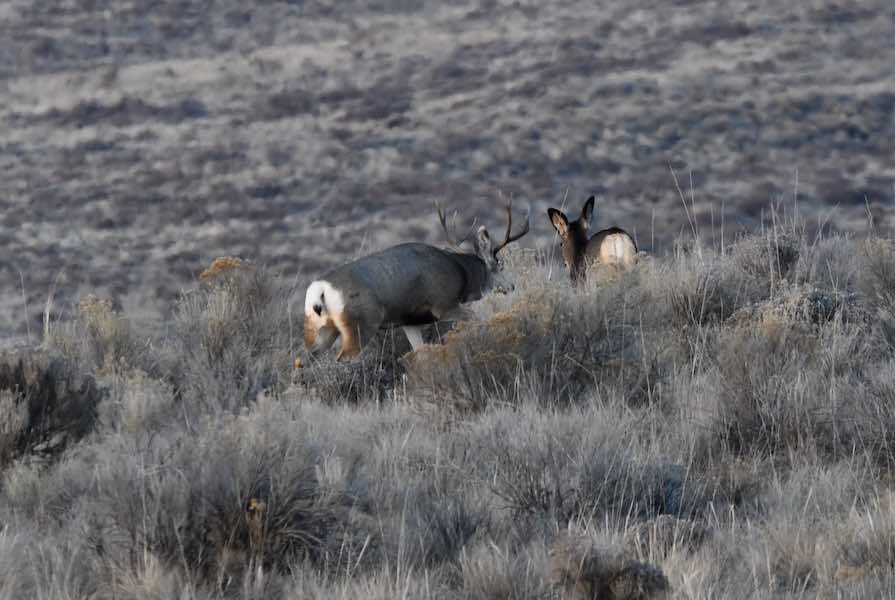The mule deer rut is going strong
Published at
Tuesday evening while heading across the desert on the Egin-Hamer Road, I saw a lone female mule deer standing on a ridge, looking back toward me. As I watched her, out of the corner of my eye, I saw a buck using his nose to follow a trail through the sagebrush.
As the large 4×5 buck got near the doe, a smaller 3×3 buck intercepted him and they started chasing each other. The larger buck finally gave the smaller one a poke with its antlers giving him enough time to get to the doe. Together they headed over the ridge for some “get-to-know-you” activities.
The next morning, I headed back to that area and found the big buck about a quarter of a mile east of where I left him the night before. I found him flirting with four does with a couple of fawns, but there was no sign of the smaller buck.

After watching the small herd, I continued driving the sandy roads west of the Junipers counting 41 deer containing seven mature bucks, at least four immature bucks and one hunter. The hunter had been watching that buck for a few days and had decided that he did not want to harvest him yet.
“He is a little too small for what I am looking for,” the hunter told me. “He has been very active with a lot of does and his extra point makes him a little undesirable. In a couple of years, he will be worth taking.”
This late deer hunt during the mule deer rutting season is generally called a “trophy hunt” because, during the rut, mature bucks lose their cautious attitude, making them more vulnerable to hunters. In Idaho, the mule deer rut usually peaks about November 15, but breeding may continue into December.

Rutting with mule deer is much different than the elk and White-tailed deer. While bull elk gather large numbers of cows and spend much of their time controlling the cows, mature Mule deer bucks do not control the movement of the does. Does entering estrus try to stay close to a mature buck for protection from the juvenile, testosterone-loaded, bucks. The bucks collect samples of urine from the does to determine how close the doe is ready to breed.
The estrus period lasts about one day and once the doe is ready, she and the buck will move away from the small herd for breeding which will happen multiple times during the day. Once she is bred, she is ignored by even the young bucks. But during that day, the young bucks will try to separate them as the one did on Tuesday.
Meanwhile, the small herd of does and fawns are circled by the younger bucks, waiting for a chance to satisfy their breeding urges. But other mature bucks or the dominant one will return in time to collect the next doe that becomes ready. This is a very stressful time for the mature bucks. Between taking care of the does, chasing away the juveniles and battling other mature bucks, they have hunters to contend with but the hunt will end on November 30.

Many of the larger bucks are harvested during the rutting season and those that are not, once they are free from the rutting demands, will usually find a safe spot to gain weight. They must gain weight quickly as they will be faced with getting ready for winter, to survive it. Snow usually comes soon, and a hard winter will kill some of them as they do not have the strength to dig out enough food to survive. This is why it is important to allow the bucks to not be harassed during the early winter.
We have been blessed with a warm, comfortable fall which has allowed birds to continue to gather their native food and not be forced to area bird feeders. With the predicted snowfall and bitter cold predictions, birds will be looking for handouts. I noticed that only a few birds were using my feeders, but that changed on Thanksgiving Day as birds flocked to my feeders. The winter has begun.
Have a safe and happy preparation for the Christmas and ice fishing season.
Living the Wild Life is brought to you by The Healing Sanctuary.
Get News In Your Inbox